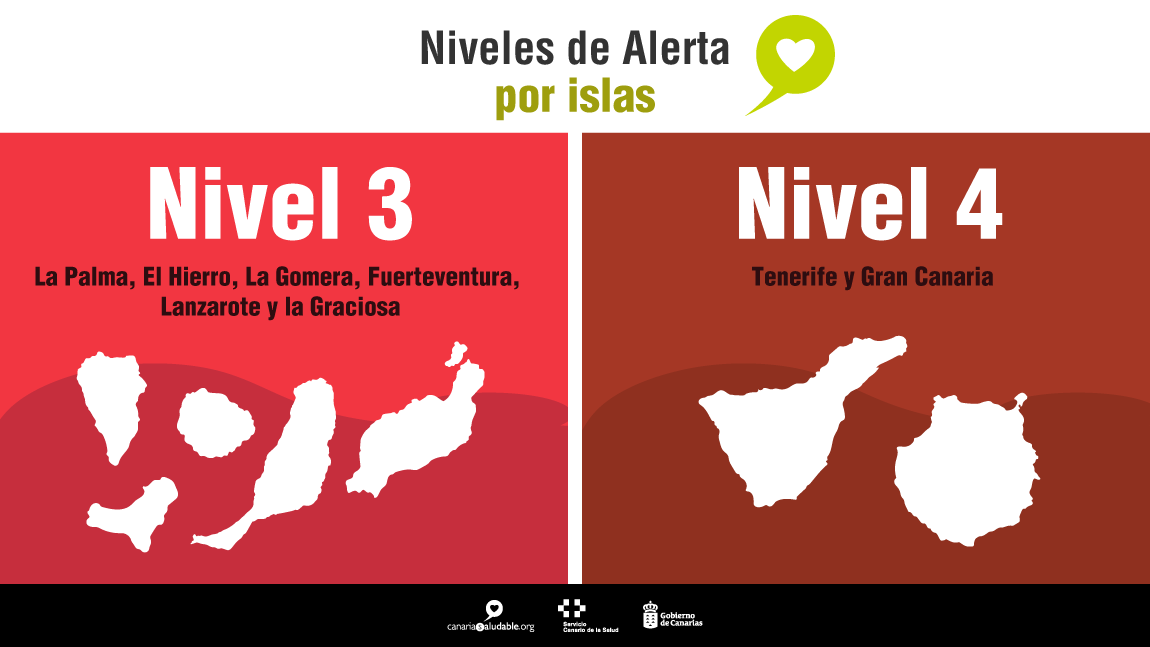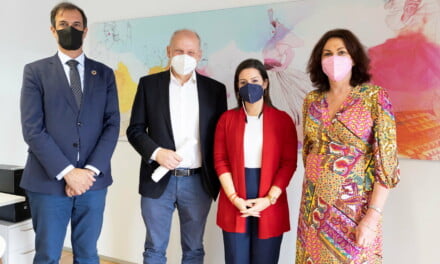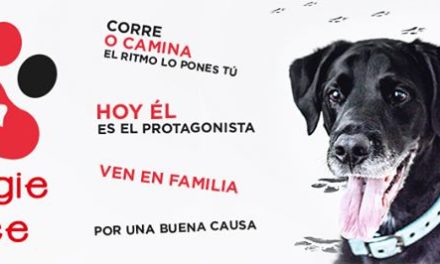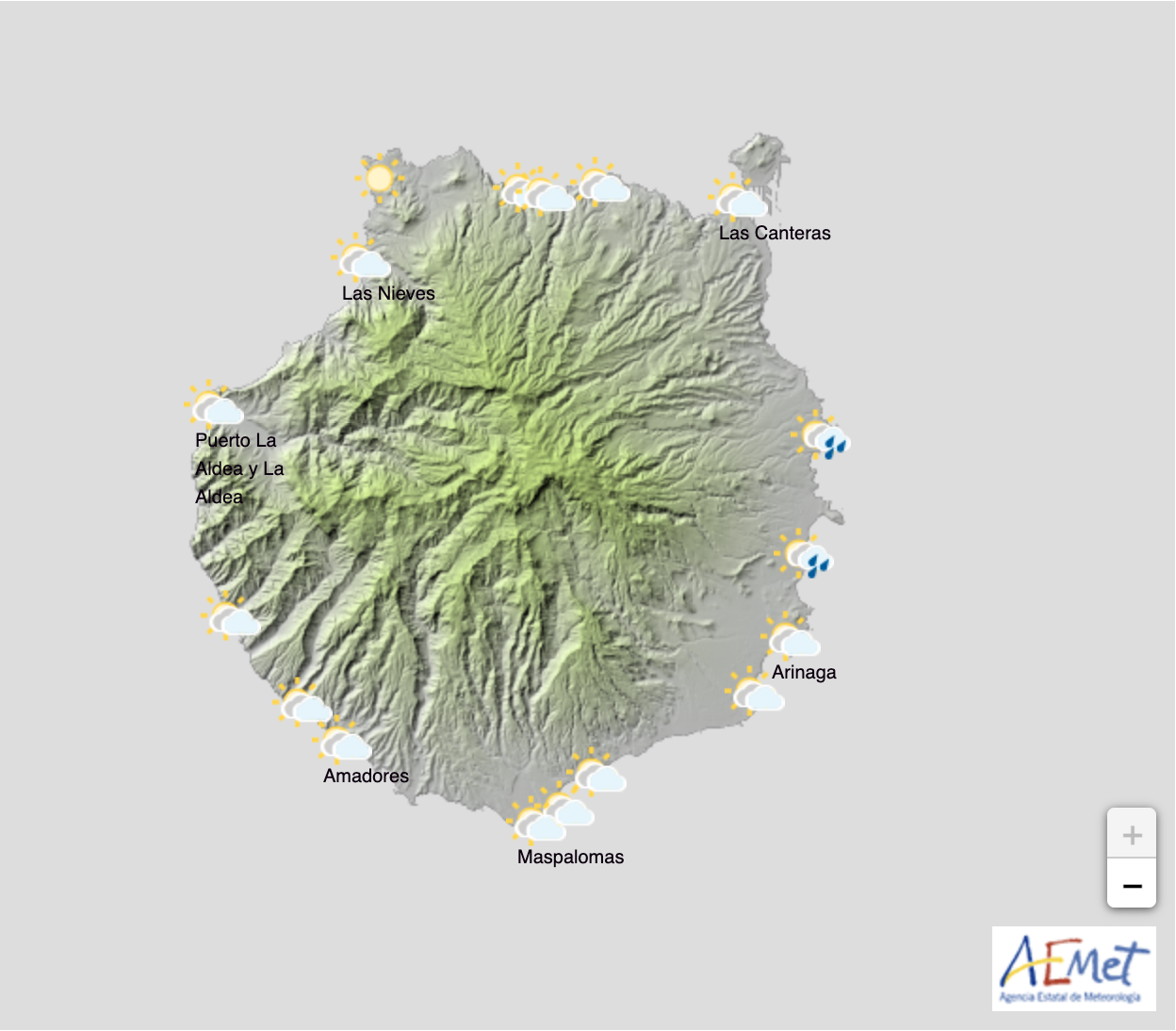Tenerife and Gran Canaria remain at Alert Level 4; Fuerteventura, La Gomera, El Hierro and Lanzarote at Level 3.
La Palma moves down to Level 3 from 00:00 this Friday, February 4. Accumulated incidence has fallen by 44.8%, but the hospital occupancy remains at very high risk on both Tenerife and Gran Canaria; on Lanzarote and La Gomera occupancy is at high risk; on Fuerteventura and La Palma, medium risk; and El Hierro’s is at at low risk, which maintains all the islands at their current Alert Levels, except La Palma, which moves down from Level 4.

The Ministry of Health this Thursday updated the Health Alert Levels following the epidemiological report from the General Directorate of Public Health, with consolidated data as of February 2.
The report specifies the evolution of the health indicators due to COVID-19, allowing the island of La Palma to be lowered to Level 3 due to the favourable epidemiological indicators. The rest of the islands maintain the same level of alert at which they were. This means that Tenerife and Gran Canaria remain at Alert Level 4; and Fuerteventura, El Hierro, La Gomera and Lanzarote (where La Graciosa is included epidemiologically) remain at Level 3.
The level change on the island of La Palma will take effect at 00:00 this Friday, February 4 (on the night of this Thursday to Friday).
In the Canary Islands Autonomous Community as a whole, between January 25 and 31, there were 9,402 new cases of COVID-19 reported, a reduction of around 44.8% in the daily average of new cases compared to last week. Data on the Accumulated Incidence (AI) at 7 days in the Canary Islands has started with a weekly average of 782.5 cases per 100,000 population, to 432.1 cases by the end of this week.
Lanzarote, has seen the largest fall in new infections, 53.6%.
Despite this good news, all the islands remain at very high risk, as is also the case with the AI7 in people over 65 years of age and the AI14, both of which are at very high risk in all the islands, though throughout the whole of the Archipelago these indicators have dropped, 31.5% and 47.2%, respectively. El Hierro is the only island that has registers a rise in the AI7 indicator for people over 65 years of age, which increased by 25%.
Healthcare indicators
Regarding primary care indicators, the daily average of occupied conventional hospital beds remains practically unchanged from the previous week, with an average occupancy of 17%, the indicator is still at high risk. Hospital occupation on Tenerife and Gran Canaria is at a Very High Risk level; Lanzarote and La Gomera at High Risk; Fuerteventura and La Palma at Medium Risk; and El Hierro is at Low Risk.
The number of ICU beds occupied by Covid-19 patients has continued trending upward, having increased by 3.5% compared to the previous evaluation. The percentage of ICU occupation for the whole of the Archipelago is 23%. Tenerife and Gran Canaria remain at Very High Risk, Fuerteventura remains at a Medium Risk, while the rest of the islands are in “controlled circulation”.
Median age
The median age of the total number of people hospitalised for COVID-19 in the last 30 days is 72 years, and 67 years for those admitted to the ICU, while the median age of those who have died in the last 30 days is 81 years and a half, but ranges from 37 to 99 years old.
42% of people admitted to critical care units diagnosed during the last 30 days had not received the complete vaccination schedule, a high percentage if we take into account that only 18.46 percent of the population over 5 years of age has not yet has been vaccinated.













